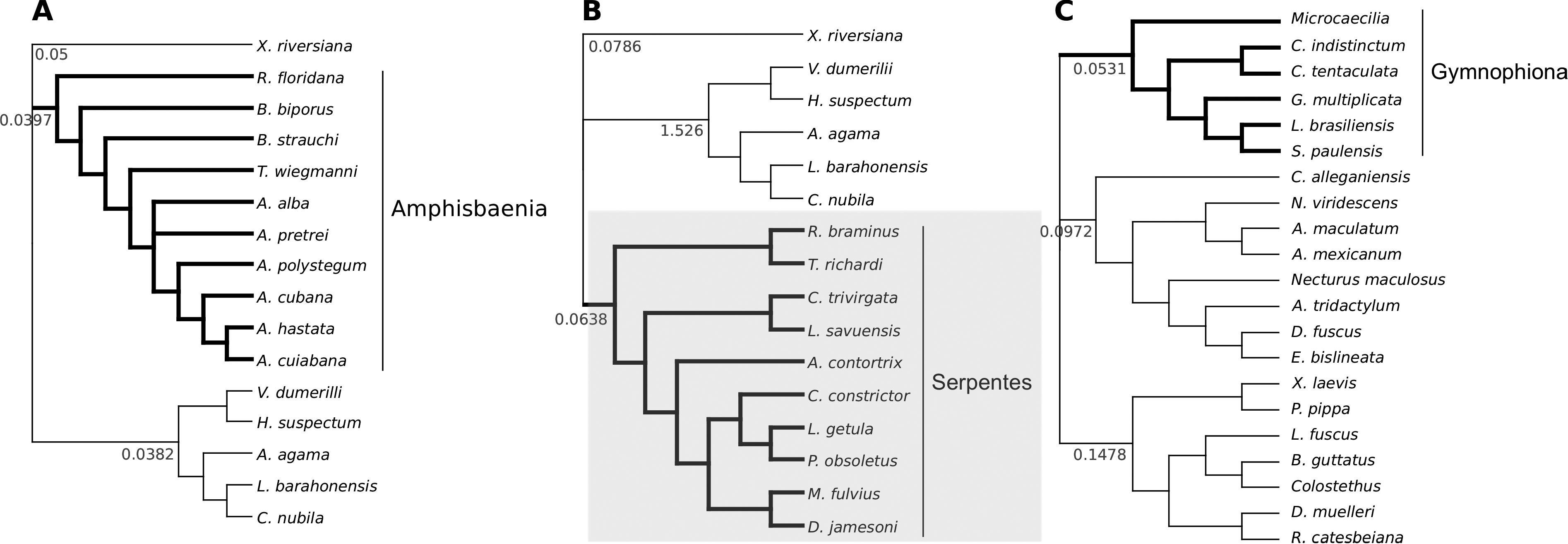Developmental processes and their results, morphological characters, are inherited through transmission of genes regulating development. While there is ample evidence that cis-regulatory elements tend to be modular, with sequence segments dedicated to different roles, the situation for proteins is less clear, being particularly complex for transcription factors with multiple functions. Some motifs mediating protein-protein interactions may be exclusive to particular developmental roles, but it is also possible that motifs are mostly shared among different processes. Here we focus on HoxA13, a protein essential for limb development. We asked whether the HoxA13 amino acid sequence evolved similarly in three limbless clades: Gymnophiona, Amphisbaenia and Serpentes. We explored variation in ω (dN/dS) using a maximum-likelihood framework and HoxA13 sequences from 47 species. Comparisons of evolutionary models provided low ω global values and no evidence that HoxA13 experienced relaxed selection in limbless clades. Branch-site models failed to detect evidence for positive selection acting on any site along branches of Amphisbaena and Gymnophiona, while three sites were identified in Serpentes. Examination of alignments did not reveal consistent sequence differences between limbed and limbless species. We conclude that HoxA13 has no modules exclusive to limb development, which may be explained by its involvement in multiple developmental processes.
development; evolution; HoxA13; molecular signatures; limblessness

